1. Sadock BJ, Kaplan HI, Sadock VA. Kaplan & Sadock's Synopsis of Psychiatry: Behavioral Sciences/Clinical Psychiatry. 9th ed. Philadelphia, PA: Lippincott Williams & Wilkins;2003.
2. Osborn D, Levy G, Nazareth I, King M. Suicide and severe mental illnesses. Cohort study within the UK general practice research database. Schizophr Res. 2008; 99(1-3):134–138. PMID:
18155881.

3. Hor K, Taylor M. Suicide and schizophrenia: a systematic review of rates and risk factors. J Psychopharmacol. 2010; 24(4):Suppl. 81–90. PMID:
20923923.
4. Hansson C, Joas E, Pålsson E, Hawton K, Runeson B, Landén M. Risk factors for suicide in bipolar disorder: a cohort study of 12 850 patients. Acta Psychiatr Scand. 2018; 138(5):456–463. PMID:
30076611.

5. Plans L, Barrot C, Nieto E, Rios J, Schulze TG, Papiol S, et al. Association between completed suicide and bipolar disorder: a systematic review of the literature. J Affect Disord. 2019; 242:111–122. PMID:
30173059.

6. Courtet P. Understanding Suicide: from Diagnosis to Personalized Treatment. Cham: Springer;2016.
7. Park SC, Lee SK, Oh HS, Jun TY, Lee MS, Kim JM, et al. Hazardous drinking-related characteristics of depressive disorders in Korea: the CRESCEND study. J Korean Med Sci. 2015; 30(1):74–81. PMID:
25552886.

8. Kim YE, Park H, Jo MW, Oh IH, Go DS, Jung J, et al. Trends and patterns of burden of disease and injuries in Korea using disability-adjusted life years. J Korean Med Sci. 2018; 34(Suppl):(1):e75.

9. Mee S, Bunney BG, Bunney WE, Hetrick W, Potkin SG, Reist C. Assessment of psychological pain in major depressive episodes. J Psychiatr Res. 2011; 45(11):1504–1510. PMID:
21831397.

10. Olié E, Guillaume S, Jaussent I, Courtet P, Jollant F. Higher psychological pain during a major depressive episode may be a factor of vulnerability to suicidal ideation and act. J Affect Disord. 2010; 120(1-3):226–230. PMID:
19394086.

11. Racine M. Chronic pain and suicide risk: a comprehensive review. Prog Neuropsychopharmacol Biol Psychiatry. 2018; 87(Pt B):269–280. PMID:
28847525.

12. Central Suicide Prevention Center. The suicide rate in Korea, 2018. Updated 2018. Accessed March 1, 2020.
http://spckorea-stat.or.kr.
15. Shin Y, Park B, Lee HA, Park B, Han H, Choi EJ, et al. Disease-specific mortality and prevalence trends in Korea, 2002–2015. J Korean Med Sci. 2020; 35(4):e27. PMID:
31997615.

16. Kim H, Kim B, Kang SG, Kim MD, Kim MH, Kim SI, et al. Attempted suicides in South Korea: a multi-center analysis of causes, methods, and psychiatric diagnoses of suicidal attempters in 2013. Korean J Biol Psychiatry. 2015; 22(4):187–194.
17. Office for Government Policy Coordination, Prime Minister's Secretariat. State coordination office of Republic of Korea. National action plan for suicide prevention. Updated 2020. Accessed February 6, 2020.
http://www.opm.go.kr/opm/info/project02.do.
18. Park E, Choi SJ. Prevalence of suicidal ideation and related risk factors among Korean adults. J Korean Acad Psychiatr Ment Health Nurs. 2013; 22(2):88–96.

20. Lee JS, Choi JW, Park SB, Yoo HI, Hong JP. Preliminary study on the clinical characteristics between suicide attempters and suicide completers who had visited emergency room. J Korean Neuropsychiatr Assoc. 2010; 49(2):185–192.
22. Barak-Corren Y, Castro VM, Javitt S, Hoffnagle AG, Dai Y, Perlis RH, et al. Predicting suicidal behavior from longitudinal electronic health records. Am J Psychiatry. 2017; 174(2):154–162. PMID:
27609239.

23. Räsänen S, Hakko H, Viilo K, Meyer-Rochow VB, Moring J. Excess mortality among long-stay psychiatric patients in Northern Finland. Soc Psychiatry Psychiatr Epidemiol. 2003; 38(6):297–304. PMID:
12799779.

25. Dome P, Rihmer Z, Gonda X. Suicide risk in bipolar disorder: a brief review. Medicina (Kaunas). 2019; 55(8):E403. PMID:
31344941.

26. Bauer M, Andreassen OA, Geddes JR, Vedel Kessing L, Lewitzka U, Schulze TG, et al. Areas of uncertainties and unmet needs in bipolar disorders: clinical and research perspectives. Lancet Psychiatry. 2018; 5(11):930–939. PMID:
30146246.

27. Allgulander C, Allebeck P, Przybeck TR, Rice JP. Risk of suicide by psychiatric diagnosis in Stockholm County. A longitudinal study of 80,970 psychiatric inpatients. Eur Arch Psychiatry Clin Neurosci. 1992; 241(5):323–326. PMID:
1606198.
28. Pompili M, Gonda X, Serafini G, Innamorati M, Sher L, Amore M, et al. Epidemiology of suicide in bipolar disorders: a systematic review of the literature. Bipolar Disord. 2013; 15(5):457–490. PMID:
23755739.

29. Dutta R, Boydell J, Kennedy N, VAN Os J, Fearon P, Murray RM. Suicide and other causes of mortality in bipolar disorder: a longitudinal study. Psychol Med. 2007; 37(6):839–847. PMID:
17349107.

30. Ösby U, Correia N, Brandt L, Ekbom A, Sparén P. Mortality and causes of death in schizophrenia in Stockholm county, Sweden. Schizophr Res. 2000; 45(1-2):21–28. PMID:
10978869.

31. Limosin F, Loze JY, Philippe A, Casadebaig F, Rouillon F. Ten-year prospective follow-up study of the mortality by suicide in schizophrenic patients. Schizophr Res. 2007; 94(1-3):23–28. PMID:
17574389.

32. Ko YS, Tsai HC, Chi MH, Su CC, Lee IH, Chen PS, et al. Higher mortality and years of potential life lost of suicide in patients with schizophrenia. Psychiatry Res. 2018; 270:531–537. PMID:
30342411.

33. Armstrong BG. Comparing standardized mortality ratios. Ann Epidemiol. 1995; 5(1):60–64. PMID:
7728286.

34. Park S, Ahn MH, Na R, Kim SO, Yoon JS, Park JH, et al. Factors associated with suicide method among psychiatric patients in a general hospital in Korea. Psychiatry Res. 2013; 210(3):945–950. PMID:
24055162.

35. Higashi K, Medic G, Littlewood KJ, Diez T, Granström O, De Hert M. Medication adherence in schizophrenia: factors influencing adherence and consequences of nonadherence, a systematic literature review. Ther Adv Psychopharmacol. 2013; 3(4):200–218. PMID:
24167693.

36. Kasckow J, Felmet K, Zisook S. Managing suicide risk in patients with schizophrenia. CNS Drugs. 2011; 25(2):129–143. PMID:
21254789.

37. Erlangsen A, Zarit SH, Conwell Y. Hospital-diagnosed dementia and suicide: a longitudinal study using prospective, nationwide register data. Am J Geriatr Psychiatry. 2008; 16(3):220–228. PMID:
18310552.

38. Draper B, Peisah C, Snowdon J, Brodaty H. Early dementia diagnosis and the risk of suicide and euthanasia. Alzheimers Dement. 2010; 6(1):75–82. PMID:
20129322.

39. Bernert RA, Joiner TE. Sleep disturbances and suicide risk: a review of the literature. Neuropsychiatr Dis Treat. 2007; 3(6):735–743. PMID:
19300608.

40. Cougle JR, Keough ME, Riccardi CJ, Sachs-Ericsson N. Anxiety disorders and suicidality in the national comorbidity survey-replication. J Psychiatr Res. 2009; 43(9):825–829. PMID:
19147159.

41. Couto T, Neves F, Machado MCL, Vasconcelos AG, Correa H, Malloy-Diniz LF. Assessment of impulsivity in bipolar disorder (BD) in comorbidity with generalized anxiety disorder (GAD): revisiting the hypothesis of protective effect. Clin Neuropsychiatry. 2012; 9(2):102–106.
42. Fishbain DA, Lewis JE, Gao J. The pain suicidality association: a narrative review. Pain Med. 2014; 15(11):1835–1849. PMID:
24995953.

43. Caldwell CB, Gottesman II. Schizophrenia--a high-risk factor for suicide: clues to risk reduction. Suicide Life Threat Behav. 1992; 22(4):479–493. PMID:
1488792.
44. Aizenberg D, Olmer A, Barak Y. Suicide attempts amongst elderly bipolar patients. J Affect Disord. 2006; 91(1):91–94. PMID:
16434107.

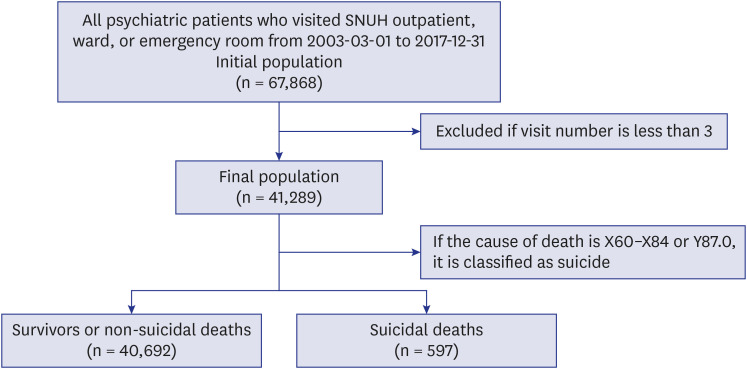
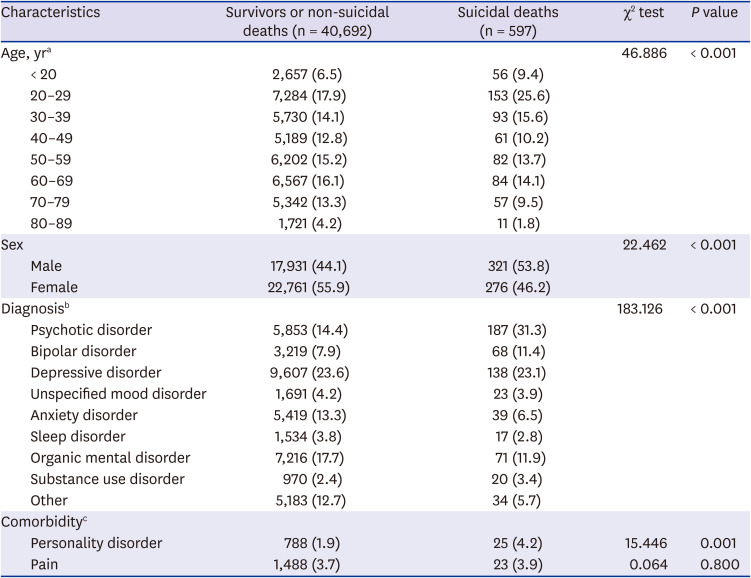

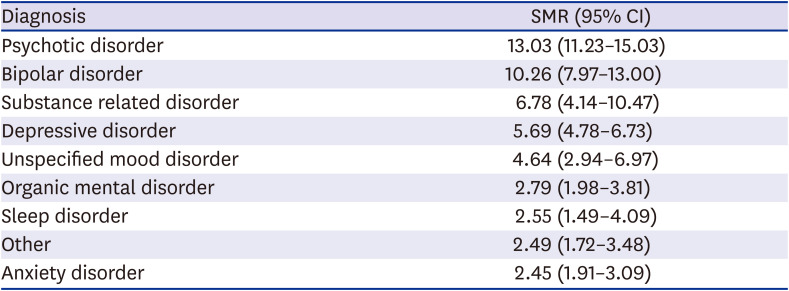
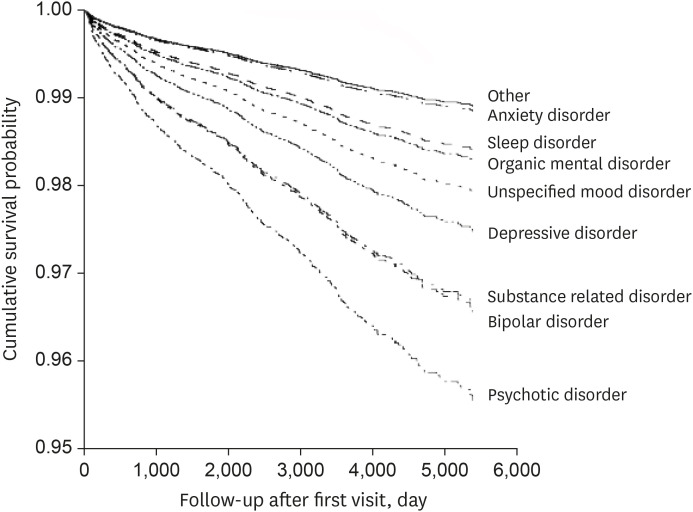





 PDF
PDF Citation
Citation Print
Print



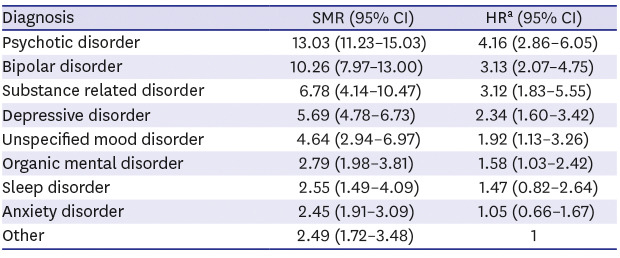
 XML Download
XML Download